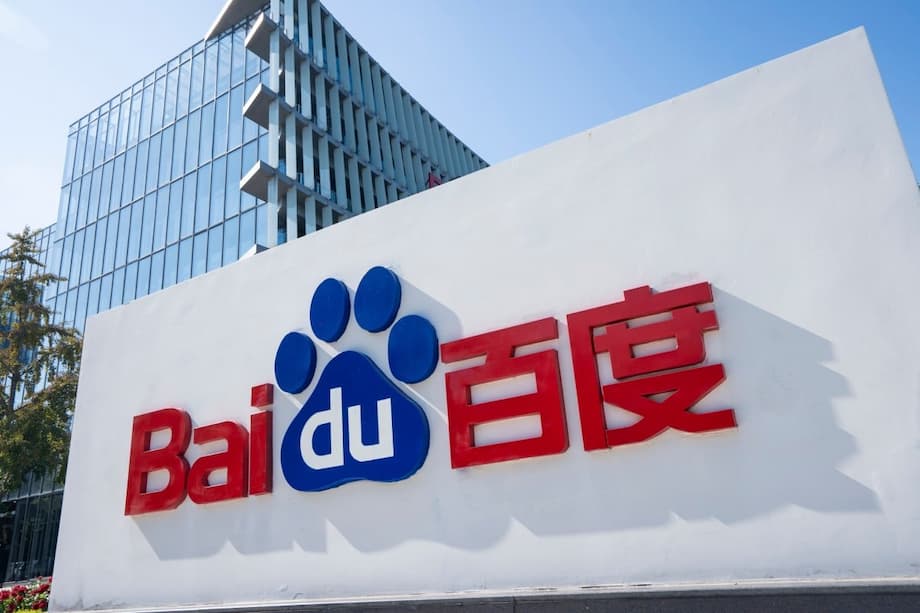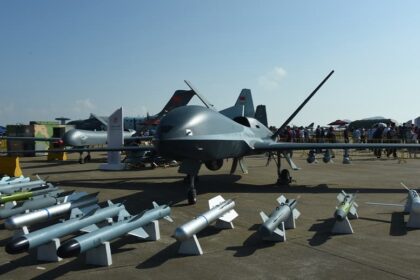Baidu’s Baige 5.0: A Leap Forward for China’s AI and Semiconductor Sectors
Baidu, one of China’s leading technology giants, has launched its Baige 5.0 AI infrastructure platform, marking a significant milestone in the nation’s quest for technological self-reliance. By leveraging a blend of domestically designed semiconductors, including those from its Kunlunxin unit, Baidu aims to supercharge the efficiency of DeepSeek’s open-source AI models and bolster China’s position in the global artificial intelligence race.
The unveiling of Baige 5.0 comes at a time when the world’s two largest economies are locked in a fierce contest over AI supremacy and semiconductor technology. With the United States tightening export controls on advanced chips, China’s tech leaders are doubling down on homegrown innovation to reduce reliance on foreign suppliers and build a robust domestic technology stack.
What Makes Baige 5.0 Stand Out?
At the heart of Baige 5.0 is a powerful combination of hardware and software advancements. The platform integrates a variety of semiconductors, most notably the Kunlunxin chips developed by Baidu’s own team. These chips are designed to rival offerings from global heavyweights like Nvidia and domestic competitors such as Huawei’s HiSilicon and Cambricon Technologies.
According to Shen Dou, Baidu’s executive vice-president and president of Baidu AI Cloud Group, Baige 5.0 delivers faster network connections, greater computing power, and enhanced capabilities for both training and inferencing AI models. Inferencing refers to the process by which a trained AI model draws conclusions or provides answers in response to user queries—a critical step in deploying AI applications at scale.
Efficiency Gains for DeepSeek’s AI Models
One of the most notable achievements of Baige 5.0 is its impact on DeepSeek’s R1 reasoning model. By employing adaptive and smart resource allocation technologies, the platform has increased the inferencing efficiency of this model by approximately 50 percent. In practical terms, this means that DeepSeek’s AI can process 50 percent more queries in the same amount of time and at the same cost, a substantial leap for both commercial and research applications.
Baidu executive Shen Dou explained, “With the same time and cost, the model can now process or work 50 percent more.”
This efficiency boost is achieved through advanced data throughput and reduced communication latency, allowing for faster and more reliable AI responses—a crucial advantage in fields ranging from natural language processing to real-time image recognition.
The Kunlunxin Super Node: Scaling Up AI
Central to Baige 5.0’s architecture is the Kunlunxin Super Node, a system capable of connecting hundreds of AI chips. This innovation enables the rapid deployment and operation of trillion-parameter AI systems within minutes. In AI, the number of parameters in a model is a key indicator of its complexity and potential intelligence. Trillion-parameter models represent the cutting edge, powering applications that require deep reasoning, nuanced understanding, and massive data processing capabilities.
The ability to launch such large-scale models quickly gives Baidu and its partners a competitive edge, especially as the demand for more sophisticated AI grows across industries.
China’s Push for AI Self-Reliance Amid Global Tensions
The launch of Baige 5.0 is not just a technological achievement—it is also a strategic move in China’s broader campaign to achieve self-sufficiency in critical technologies. The U.S. government has imposed strict export controls on advanced semiconductors, limiting Chinese access to the latest chips from companies like Nvidia and AMD. These restrictions have spurred a wave of innovation and investment in China’s domestic semiconductor industry.
Kunlunxin, Baidu’s chip design arm, is at the forefront of this movement. The company recently secured chip orders worth over 1 billion yuan (about $137 million) from China Mobile for AI projects, signaling strong market demand and confidence in Chinese-made chips. Meanwhile, other domestic players like Cambricon Technologies are reporting significant revenue growth, further accelerating the shift toward homegrown solutions.
Competing with Global Giants
While Baidu’s Kunlunxin chips are designed to compete with Nvidia’s industry-leading GPUs, the global landscape remains fiercely competitive. Nvidia’s chips are widely regarded as the gold standard for AI training and inferencing, but U.S. export restrictions have forced Chinese companies to innovate or risk falling behind.
Recent developments suggest that the U.S. may allow the sale of scaled-down versions of Nvidia’s next-generation chips to China, but experts warn that even these limited products could enable Chinese firms to build powerful AI supercomputers. The stakes are high, as access to advanced chips is seen as a key determinant of future economic and military power.
Open-Source AI and the DeepSeek Ecosystem
Another important aspect of Baige 5.0 is its support for open-source AI models, particularly those developed by DeepSeek. Open-source AI allows researchers and companies to collaborate, share code, and accelerate innovation. By optimizing its platform for DeepSeek’s models, Baidu is helping to foster a vibrant ecosystem of AI development within China.
DeepSeek’s open-source approach is especially valuable in a landscape where access to foreign technology is increasingly restricted. By building on domestic hardware and software, Chinese AI researchers can continue to push the boundaries of what is possible, even in the face of external pressures.
Preparing for the Next Generation of AI Chips
Looking ahead, DeepSeek and other Chinese AI firms are preparing to release next-generation domestic AI chips, further reducing reliance on imported technology. These efforts are supported by massive government investment, with Beijing planning a one trillion yuan ($137 billion) fund to support AI and robotics startups. The goal is clear: to make China a global leader in artificial intelligence and advanced computing.
The Broader Impact: AI, Industry, and Society
Baidu’s Baige 5.0 launch is part of a larger wave of innovation sweeping through China’s technology sector. Companies like Alibaba are also developing their own AI inferencing chips, while Tencent and others are expanding their cloud and AI offerings. This surge in domestic chip production and AI infrastructure is expected to double global semiconductor revenues by 2030, driven by demand from AI, automotive, and other high-tech industries.
On the consumer front, China is showcasing its AI ambitions with public-facing applications such as humanoid robots and intelligent devices. A new robot store in Beijing, for example, offers everything from chess-playing robots to life-sized replicas of Albert Einstein, reflecting the country’s drive to integrate AI into everyday life.
Challenges and Opportunities
Despite these advances, China’s tech sector faces significant challenges. Security concerns, such as recent data breaches at Tencent Cloud, highlight the need for robust cybersecurity measures as AI and cloud infrastructure become more pervasive. At the same time, the rapid pace of innovation is creating new opportunities for startups, researchers, and established firms alike.
Financial markets are closely watching these developments. While Baidu’s shares dipped slightly following the Baige 5.0 announcement, the company’s long-term prospects remain strong, especially as it continues to invest in AI-first strategies and enterprise solutions.
How Baige 5.0 Fits into the Global AI Race
The global race for AI dominance is intensifying, with China and the U.S. vying for leadership in both hardware and software. Baidu’s Baige 5.0 platform represents a major step forward for China, demonstrating that domestic companies can build world-class AI infrastructure even in the face of external constraints.
By combining advanced chip design, scalable AI systems, and support for open-source innovation, Baige 5.0 positions Baidu—and by extension, China—as a formidable player in the next era of artificial intelligence. The platform’s ability to deploy trillion-parameter models within minutes is not just a technical feat; it is a statement of intent in the ongoing competition for technological supremacy.
In Summary
- Baidu has launched the Baige 5.0 AI platform, powered by domestic Kunlunxin chips, to boost the efficiency of DeepSeek’s open-source AI models by 50 percent.
- The platform enables rapid deployment of trillion-parameter AI systems, marking a leap in China’s AI infrastructure capabilities.
- Baige 5.0 is part of China’s broader push for technological self-reliance amid U.S. export restrictions on advanced chips.
- Kunlunxin and other Chinese chipmakers are gaining market traction, with major orders and revenue growth reported in 2025.
- Baidu’s focus on open-source AI and scalable infrastructure supports a vibrant domestic ecosystem and positions China as a global AI contender.
- The launch reflects both the opportunities and challenges facing China’s tech sector as it navigates security, innovation, and global competition.












